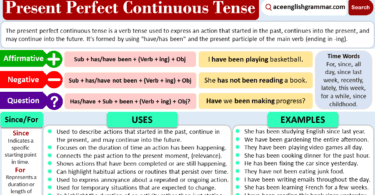The simple past tense, also known as the past indefinite tense, is used to describe actions or events that occurred and were completed in the past. This tense is essential when narrating past events, telling stories, or stating facts. It helps provide a clear timeline of actions without any connection to the present. In this article, we’ll dive into the structure, rules, and examples of the simple past tense to understand it better.
Table of Contents
What is Simple Past Tense?
The simple past tense is used to express actions or events that happened and are now finished. For regular verbs, the past tense is formed by adding “-ed” to the base form of the verb. Irregular verbs have unique forms, and their past tense must be memorized.
For example:
- I ate pizza for lunch.
- We watched a movie last night.
- He bought a new car last month.
Structure of Simple Past Tense
Positive Sentences
In affirmative sentences, the structure is:
- Subject + Past Verb (2nd Form) + Object
Examples:
- She read a book before bed.
- They ate pizza for dinner.
- He bought a new car last week.
Negative Sentences
In negative sentences, we use “did not” (or “didn’t”) followed by the base form of the verb:
- Subject + Did + Not + Base Verb (1st Form) + Object
Examples:
- I didn’t eat breakfast this morning.
- She didn’t pass the exam.
- He did not finish his homework.
Interrogative Sentences
For questions, we use “Did” at the beginning, followed by the subject and the base verb:
- Did + Subject + Base Verb + Object?
Examples:
- Did you finish your homework?
- Did she watch the movie?
- Did they travel last year?
Wh-Questions
When forming questions with words like what, where, when, why, or how, use the following structure:
- Wh-word + Did + Subject + Base Verb + Object?
Examples:
- Where did they go on vacation?
- What did you eat for dinner?
- Why did she resign from her job?
Negative Interrogatives
To ask a negative question in the simple past tense, we combine the negative and interrogative forms:
- Did + Subject + Not + Base Verb + Object?
Examples:
- Did he not call you back?
- Did she not like the book?
- Did they not finish the project?
Uses of Simple Past Tense
- Completed Actions: To describe actions that happened and finished in the past.
- I visited Paris last summer.
- Past Routines: To talk about habitual actions in the past.
- He always walked to school.
- Narrating Events: Useful for telling stories and describing sequences of actions.
- She woke up, had breakfast, and left for work.
- Historical Facts: To describe past events or achievements.
- The Wright brothers flew the first airplane in 1903.
- Past States: Describes past conditions or situations.
- The house was quiet.
Regular vs. Irregular Verbs
Regular Verbs
For regular verbs, the past tense is formed by adding “-ed” to the base form:
- Walk → Walked
- Play → Played
- Talk → Talked
Irregular Verbs
Irregular verbs do not follow the “-ed” pattern and have unique past forms that must be memorized:
- Go → Went
- Eat → Ate
- Take → Took
Time Expressions in Simple Past Tense
Common time expressions used with the simple past tense help indicate when an action took place. Some examples include:
- Yesterday, last week, a month ago, in 2005, last year, as a child, at that time, and once.
These time words anchor the action in the past, making it clear when the event occurred.
Simple Past Tense Rules
- Regular Verbs: Add “-ed” to the base form.
- Example: Walk → Walked
- Irregular Verbs: Use the unique past form.
- Example: Go → Went
- Negative Form: Use “did not” + base verb.
- Example: I did not (didn’t) go.
- Questions: Start with “Did” + base verb.
- Example: Did you finish the report?
- Time Words: Use expressions like yesterday, last week, or ago to specify the time of the action.
- Example: I went there last summer.
Examples of Simple Past Tense
Here are several examples to help illustrate the usage of the simple past tense:
- I studied for the exam all night.
- She didn’t pass the test.
- We visited the museum yesterday.
- Did you see that movie last week?
- They wrote a letter to their teacher.
FAQs
Q1: What is Simple Past Tense?
Simple past tense expresses actions that happened and were completed in the past. It uses the past form of the verb, such as “went” or “played.”
Q2: How is the Simple Past Tense formed?
Regular verbs take “-ed” for the past form (walk → walked), while irregular verbs have unique past forms (go → went).
Q3: When do we use Simple Past Tense?
Use for completed actions, past routines, and to tell stories or narrate events that occurred in the past.
Q4: How are negative sentences formed in Simple Past Tense?
Negative sentences use “did not” (didn’t) followed by the base form of the verb (He didn’t go).
Q5: How are questions formed in Simple Past Tense?
Questions are formed by placing “Did” before the subject, followed by the base verb (Did you visit Paris?).




